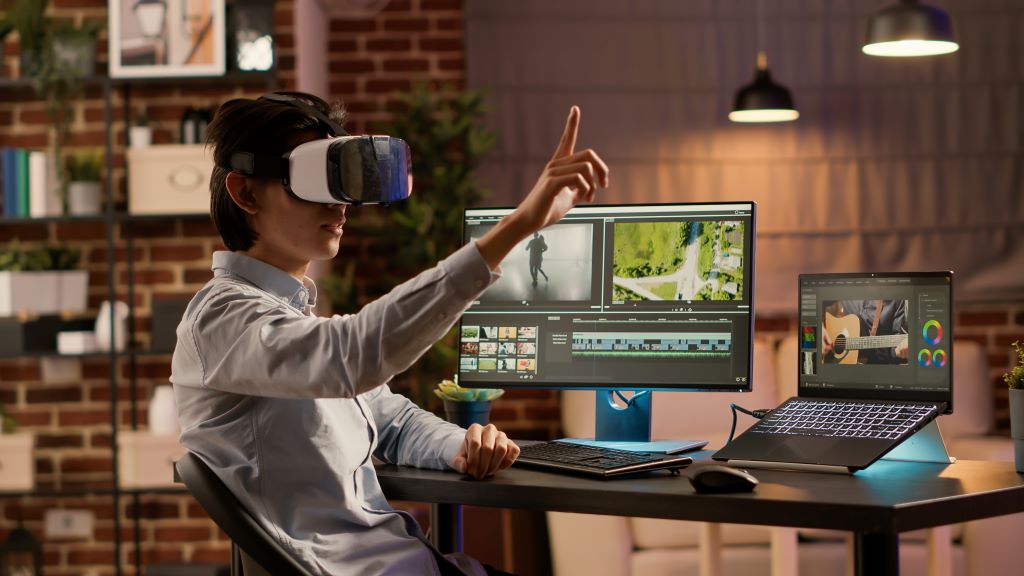
Tech Trends in Motion Film Developing: Pushing the Boundaries of Visual Storytelling
In the dynamic world of motion film development, technological advancements continue to revolutionize the way we capture, process, and share visual stories.
From innovative scanning techniques to cutting-edge editing software, technology plays a pivotal role in pushing the boundaries of visual storytelling and elevating the art of motion film development. In this comprehensive guide, we’ll explore the latest tech trends shaping the future of motion film development and their impact on visual storytelling.
The Evolution of Motion Film Developing
Motion film developing technology has come a long way since its inception, with technology driving significant advancements in the field. Here’s a look at how technology has shaped the evolution of motion film developing:

1. From Analog to Digital
Traditionally, motion film development involved working with physical film reels and chemical processes in darkrooms. However, the advent of digital technology has transformed the landscape, allowing filmmakers to digitize and manipulate their footage using computers and software.
2. Automation and Efficiency
Advancements in automation technology have streamlined the film developing process, making it faster, more efficient, and less labor-intensive. Automated film scanners and processing machines can handle large volumes of film quickly and accurately, reducing turnaround times and increasing productivity.
Cutting-Edge Tech Trends in Motion Film Developing
Let’s delve into some of the latest tech trends shaping the future of motion film development:
1. High-Resolution Scanning
High-resolution scanning technology enables filmmakers to capture every detail of their film negatives or slides with unparalleled clarity and precision.
These advanced scanners use sophisticated sensors and imaging algorithms to produce stunning digital reproductions of analog film, preserving the authenticity and integrity of the original footage.
2. AI-Powered Restoration
Artificial intelligence (AI) is revolutionizing the process of film restoration, allowing filmmakers to breathe new life into old or damaged footage. AI-powered algorithms can automatically detect and correct imperfections such as scratches, dust, and color fading, restoring the footage to its original glory with minimal manual intervention.
3. Virtual Reality (VR) Editing
Virtual reality (VR) technology is opening up new possibilities for immersive editing experiences, allowing filmmakers to step inside their footage and manipulate it in three-dimensional space. VR editing software enables users to visualize their edits in real-time, providing a more intuitive and immersive workflow for creating dynamic and engaging visual stories.

4. Blockchain-Based Asset Management
Blockchain technology is revolutionizing asset management in the film industry, offering a secure and transparent way to track and manage digital assets such as film footage, scripts, and rights ownership.
By leveraging blockchain-based platforms, filmmakers can ensure the integrity and authenticity of their work, streamline the distribution process, and protect their intellectual property rights.
The Impact of Tech Trends on Visual Storytelling
These tech trends are not only shaping the future of motion film developing but also revolutionizing the art of visual storytelling. Here’s how:
1. Enhanced Creativity and Flexibility
By leveraging advanced scanning and editing technologies, filmmakers have more creative freedom and flexibility to experiment with different visual styles, effects, and storytelling techniques.
High-resolution scanning enables filmmakers to capture stunning details and textures, while AI-powered restoration tools make it easier to correct mistakes and enhance the overall quality of the footage.
2. Immersive and Engaging Experiences
Virtual reality (VR) technology offers filmmakers the opportunity to create immersive and interactive experiences that transport viewers into the heart of the action.
VR editing allows filmmakers to craft dynamic narratives that unfold in three-dimensional space, immersing viewers in a rich and immersive storytelling experience that transcends traditional filmmaking conventions.
3. Streamlined Production Workflows
Automation technology and blockchain-based asset management systems streamline production workflows, making it easier for filmmakers to collaborate, manage assets, and distribute their work efficiently.
Automated film scanners and processing machines reduce the time and labor required for film developing, while blockchain-based platforms provide a secure and transparent way to track and manage digital assets throughout the production process.

Case Study: The Impact of Tech Trends on a Filmmaking Studio
To illustrate the impact of tech trends on visual storytelling, let’s consider the case of Filmmaking Studio, a creative studio known for its innovative approach to filmmaking.
Challenge
Filmmaking Studio faced challenges with traditional film developing processes, including long turnaround times, manual labor, and limited creative flexibility.
Solution
The studio embraced cutting-edge scanning and editing technologies to streamline its production workflows and enhance the quality of its visual storytelling. By investing in high-resolution scanning equipment, AI-powered restoration software, and Virtual reality editing tools, Filmmaking Studio was able to revolutionize its approach to motion film developing and deliver immersive and engaging visual experiences to its audience.
Results
The adoption of tech trends enabled Filmmaking Studio to stay ahead of the curve and differentiate itself in a competitive industry. By leveraging advanced scanning and editing technologies, the studio was able to push the boundaries of visual storytelling, creating visually stunning and emotionally resonant films that captivated audiences and garnered critical acclaim.
Conclusion
As technology continues to advance, the future of motion film developing looks brighter than ever. From high-resolution scanning and AI-powered restoration to VR editing and blockchain-based asset management, tech trends are pushing the boundaries of visual storytelling and revolutionizing the way we capture, process, and share motion film.
By embracing these innovations, filmmakers have more creative freedom, flexibility, and opportunities to craft immersive and engaging visual experiences that resonate with audiences around the world. As we embark on this exciting journey into the future of motion film developing, one thing is certain: the possibilities are endless, and the best is yet to come.


